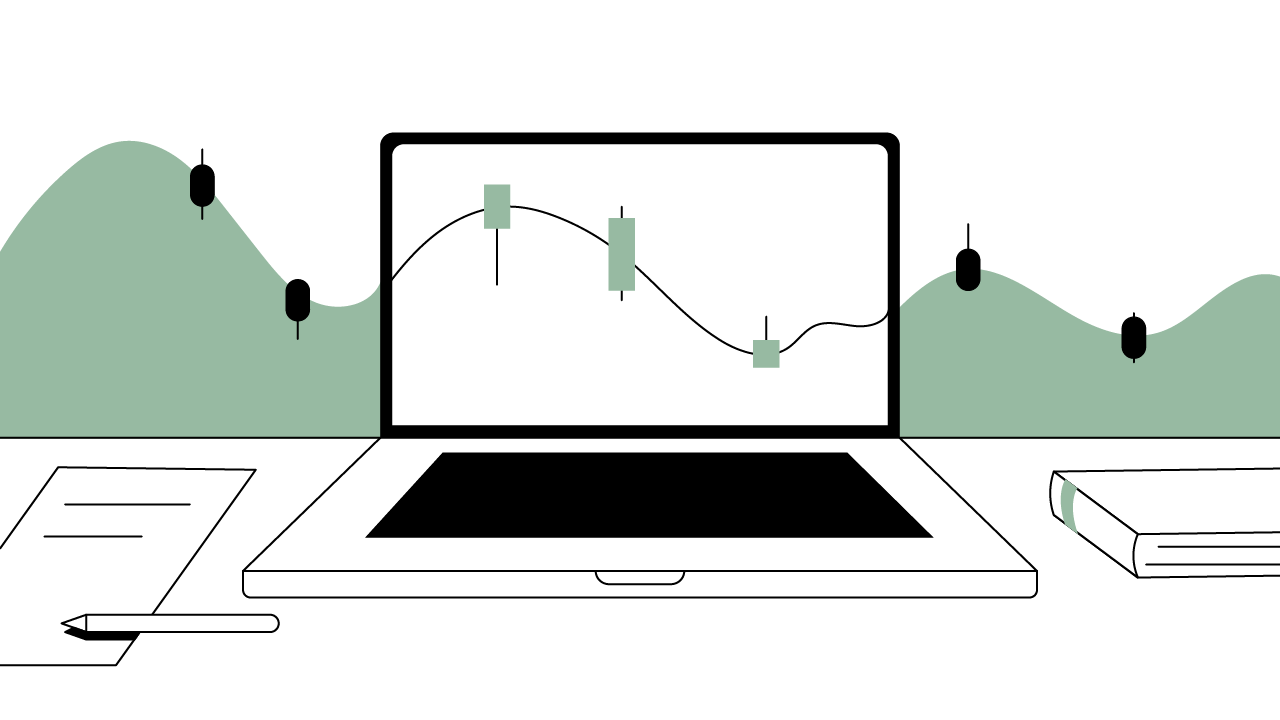Contents
Stop-Limit Order: What Is It, How To Use, and Examples
Learn about what a stop-limit order is, how to use it effectively, its advantages and disadvantages, and practical examples.
Updated January 22, 2025 • 6 min read

Summary
The stock market and cryptocurrency trading can be overwhelming, especially with the range of order types available. Among them, the stop-limit order stands out as a versatile tool that offers both control and precision. So, what is a stop-limit order, and how can it be used to optimize your investment strategy? Whether you’re looking to manage risk in volatile markets or execute trades at a specific price, understanding stop-limit orders can be a game-changer for your portfolio. In this guide, we’ll explore its mechanics, advantages, and disadvantages and give you some actionable tips to help you get started.
What Is a Stop-Limit Order?
A stop-limit order is a type of conditional trade that combines the features of a stop-loss order and a limit order. It enables traders to specify two critical prices: a stop price and a limit price.
Here’s how it works:
The stop price triggers the order to become active.
The limit price ensures the trade is executed only within a specific price range, offering control over the execution price.
Unlock the future of money on Gemini
Start your crypto journey in minutes on the trusted crypto-native finance platform
This type of order offers precision and control. Unlike market orders, which prioritize speed over price, stop-limit orders execute only within a defined range.
Unlike trailing stops, which adjust dynamically, stop-limit orders remain fixed, providing predictability in volatile markets. This makes them ideal for managing risk and avoiding unfavorable trades during rapid fluctuations.
How Do Stop-Limit Orders Work?
Stop-limit orders rely on three key components:
Stop Price
The stop price is the threshold that activates the stop-limit order. Choosing this price requires careful analysis of market conditions to avoid premature triggers.
Technical indicators, such as moving averages, can help identify key levels where prices are likely to stabilize. For instance, if a stock has strong support at $100, setting a stop price slightly below, such as $98, is important for executing buy-stop orders effectively.
In volatile markets, tolls like the average true range (ATR) can guide stop price decisions. ATR measures the asset’s typical price movement range, helping traders set stop prices that account for natural volatility without frequent triggers.
It’s best to avoid setting minimum prices at psychological levels like $50 or $100. Instead, use slightly adjusted figures like $49.95 to reduce the changes of activation due to market noise. By understanding the market’s behavior, traders can optimize their stop price to minimize unnecessary activations.
Limit Price
The limit price reassures that any time a stop limit is activated, the stock price will only be able to be traded within a certain range. Such a level of control is necessary in fast-moving markets in order to avoid making unfavorable trades.
A tight limit price near the stop price is more effective, but the danger of non-execution rises sharply when the market fluctuates. On the other hand, a wider limit price increases the probability of the trade being carried out, but at a possible inferior trading rate.
For instance, when engaging in cryptocurrency trading where volatility is high, a certain limit price below is considered that of the stop price, which should allow for a little “breathing space” of 3%. The stable stocks, a flatter range, for instance, 0.5 %, could be enough.
Liquidity control is another important factor — in highly liquid markets, the quantities are more likely to fill a tight limit price than thin trade assets requiring a wider range. This way, traders can switch between limit prices defined by trading aims and risk aversions.
Market Price
The market price refers to the current trading value of an asset. It’s essential to monitor the current market price when setting stop-limit order activates when the price reaches your desired level.
These components work together to provide precision in order triggers, making stop-limit orders a popular choice among traders.
What Is an Example of a Stop-Limit Order?
Stop-limit orders can be applied across various markets, offering traders control over price execution and risk management. Let’s explore two examples — one in the stock market and another in cryptocurrency trading — to see how they work in different scenarios.
Example 1: Stock Trading
You have invested directly in 100 shares of a particular stock with a current price of $60.
To protect your investment from potential losses, you set up a stop-limit order with the following parameters:
Stop Price: $55
Limit Price: $53
If the price of the stock drops to $55, the stop-limit is activated, and the order is in force. The trade will only proceed if the stock price is $53 and above. However, if the price goes below $53, the trade will not be made possible, which is good enough to avoid a situation where you’re bitterly forced to sell your shares at a low price.
These strategies are efficient when prices change frequently, which can be a problem in highly volatile markets. The sell stop-limit order offers protection in terms of execution while also exercising control over the risk factor.
Example 2: Cryptocurrency Trading
Now, let's apply the same concept to cryptocurrency, a market known for its 24/7 activity and higher volatility.
Let’s say you own 2 Bitcoin (BTC), currently valued at $35,000 each. Concerned about a potential market downturn, you decide to use a stop-limit order.
Stop Price: $34,000
Limit Price: $33,500
When Bitcoin’s price falls to $34.000, the stop-limit order is triggered. The trade will execute only if the price remains at or above $33,500. If the price drops below $33,500, the order will remain unfulfilled, protecting your Bitcoin from being sold during a sharp market dip.
Cryptocurrency markets, with continuous trading and high volatility, differ from stocks. If Bitcoin's price drops rapidly from $34,000 to $33,000, skipping the $33,500 limit price, the order won’t execute, highlighting the precision but lack of guaranteed execution in fast-moving markets.
In the first example, stop-limit orders can be used to trade several sectors, while the second example shows how this order type gives one more way of controlling trade in any given asset class.
Whether you’re trading stocks with fixed market hours or cryptocurrencies where the crypto market is active 24/7, stop-limit orders help achieve control at the right level of risk.
What Are the Advantages of a Stop-Limit Order?
A stop-limit order can have a few main advantages. Here’s what to know:
Price Control
A stop-limit order ensures trades are executed at a specified price or better providing traders with unparalleled control over their transactions.
Risk Management
By combining the features of a stop-loss and buy-limit order, traders can minimize potential losses, especially during market fluctuations. This makes it a valuable tool in any risk management strategy.
Automation
Stop-limit orders are automated, allowing traders to set their parameters and focus on other tasks. This is especially beneficial during trading hours or in fast-moving markets.
What Are the Disadvantages of a Stop-Limit Order?
That said, there are also a few potential pitfalls when it comes to stop-limit orders. These include:
Price Gaps
In some cases, the market may move too quickly, resulting in price gaps. This can prevent the stop-limit order from executing, especially if the market price bypasses the limit price.
Difficult To Set Up
Determining the ideal stop price and limit price requires extensive knowledge of market conditions and technical analysis, making it challenging for beginners.
How To Use a Stop-Limit Order
Here’s how you can use stop-limit orders to manage risk and execute trades with precision:
Research Market Conditions
Understanding the current market conditions is crucial. Analyze historical data, volatile markets, and trends to determine when a stop-limit order might be most effective.
Perform Technical Analysis
Use technical analysis tools like moving averages, support and resistance levels, and candlestick patterns to identify the best available prices for your stop-limit order.
Select a Time Frame
Choose a time frame that aligns with your trading strategies. For instance, short-term traders use stop-limit orders within a single trading day, while long-term investors might prefer a good-til-canceled (GTC) approach.
Determine Your Fulfillment and Trigger Prices
Set a stop price that reflects your risk tolerance and a limit price that ensures favorable execution. For example, if your risk tolerance allows a 10% drop, adjust your prices accordingly.
Set Up the Order
Log onto your brokerage account, navigate to the trading order types section, and select “Stop-Limit Order.” Enter your stop price, limit price, and other relevant details to finalize the setup.
A Final Word on Stop-Limit Orders
Stop-limit orders will benefit traders who require accurate and specific control over their trades. They are an ideal mix between a stop loss and a limit order because they offer protection against risk and the chance to capture market movements.
Emerging technologies are enhancing these orders even more — for example, AI-driven platforms currently process real-time data to provide traders with the best stop and limit prices in their operations instead of relying on guesswork. A trader can set predefined operation parameters with trading bots, meaning there are fewer chances of making a mistake.
Ready to take your trading strategy to the next level? Explore how Gemini can help you dive into crypto trading with ease. Sign up today, and start trading smarter and safer.
Cryptopedia does not guarantee the reliability of the Site content and shall not be held liable for any errors, omissions, or inaccuracies. The opinions and views expressed in any Cryptopedia article are solely those of the author(s) and do not reflect the opinions of Gemini or its management. The information provided on the Site is for informational purposes only, and it does not constitute an endorsement of any of the products and services discussed or investment, financial, or trading advice. A qualified professional should be consulted prior to making financial decisions. Please visit our Cryptopedia Site Policy to learn more.

Is this article helpful?


